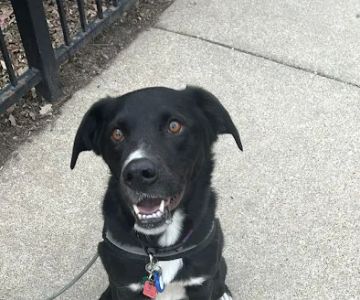How to Train an Adult Dog with Bad Behavior
- Understanding the Root Cause of Bad Behavior
- Common Bad Behaviors in Adult Dogs
- Positive Reinforcement Techniques for Training
- Consistency and Patience in Dog Training
- Seeking Professional Help When Training an Adult Dog
- Tips for Maintaining Long-Term Training Success
Understanding the Root Cause of Bad Behavior
When training an adult dog with bad behavior, it’s essential to first understand the root cause of the behavior. Dogs may exhibit undesirable behaviors for several reasons, including past trauma, lack of proper training, medical issues, or simply not having enough physical and mental stimulation. Before starting any training program, it's crucial to assess your dog's environment and past experiences to determine what might be contributing to their behavior.
Behavioral issues can range from aggression and excessive barking to destructive chewing and housetraining problems. By identifying the cause, you can choose the right approach to address the issue effectively. For example, if your dog is anxious, providing more mental stimulation and offering a calming environment may help reduce destructive behaviors. If the issue is related to lack of training, consistency and positive reinforcement will be essential in turning things around.
Common Bad Behaviors in Adult Dogs
Adult dogs may develop a variety of bad behaviors over time. Some of the most common issues include:
- Excessive Barking: While barking is a natural way for dogs to communicate, excessive barking can become a nuisance. This could be due to boredom, anxiety, or attention-seeking behavior.
- Aggression: Aggressive behavior, such as growling, biting, or snapping, can be the result of fear, territorial instincts, or past abuse. Understanding the triggers behind aggression is key to effective training.
- Destructive Chewing: Many adult dogs chew on furniture, shoes, or other household items, which could be a sign of anxiety, lack of exercise, or boredom.
- Housetraining Issues: Some adult dogs may still struggle with housebreaking. This can be due to inconsistent training or even medical conditions that affect their ability to control their bladder.
Positive Reinforcement Techniques for Training
When training an adult dog with bad behavior, positive reinforcement is one of the most effective methods. This involves rewarding your dog for good behavior rather than punishing them for bad behavior. Positive reinforcement helps to create a positive association with desired actions and encourages the dog to repeat those behaviors.
Here are some positive reinforcement techniques that can help:
- Reward-Based Training: When your dog exhibits good behavior, reward them immediately with treats, praise, or playtime. This reinforces the behavior and encourages them to repeat it.
- Clicker Training: A clicker can be used to mark desired behaviors and associate it with a reward. It’s a great tool for precise training.
- Consistency: Be consistent with your commands and rewards. If your dog doesn’t understand what is expected, it will be difficult for them to learn.
- Redirecting Negative Behavior: Instead of punishing undesirable behaviors, redirect your dog’s focus onto a positive activity, like chewing on a toy instead of furniture.
Consistency and Patience in Dog Training
Training an adult dog with bad behavior requires both consistency and patience. Dogs don’t change overnight, and it’s important to remain committed to the training process. It’s essential to reinforce the same behaviors consistently to help your dog understand what is expected of them.
Patience is key, especially when working with adult dogs who may have established bad habits over time. Progress can be slow, but with time and effort, most behavioral issues can be addressed. Avoid becoming frustrated with your dog, as they can sense your emotions and may become stressed, making training even harder.
Seeking Professional Help When Training an Adult Dog
If you find that your dog’s behavior isn’t improving despite your best efforts, it might be time to seek professional help. A professional dog trainer or behaviorist can assess your dog’s behavior and develop a personalized training plan tailored to their needs. They can also provide guidance on handling specific issues such as aggression or severe separation anxiety.
Professional trainers often use techniques such as behavior modification, socialization, and desensitization to address more complex behavioral problems. They can also work with you to ensure that you are using the right training methods and techniques, helping you build a better relationship with your dog.
Tips for Maintaining Long-Term Training Success
After successfully training your adult dog, it’s essential to maintain the progress you’ve made. Here are some tips for ensuring long-term success:
- Stay Consistent: Continue to reinforce good behavior with regular training sessions. Even after your dog has learned the desired behaviors, consistency is important to prevent regression.
- Exercise and Mental Stimulation: Make sure your dog gets enough physical exercise and mental stimulation. A tired dog is less likely to engage in destructive behavior.
- Positive Reinforcement: Always reward good behavior, even after the initial training phase. Positive reinforcement ensures that your dog continues to perform desired behaviors.
- Monitor and Adjust: Regularly assess your dog’s behavior and make adjustments to your training if needed. If new problems arise, address them early to prevent bad habits from forming.
Training an adult dog with bad behavior can be a challenging but rewarding experience. By using positive reinforcement, being consistent, and seeking professional help when needed, you can help your dog become a well-behaved and happy companion. For more tips and expert advice, visit Hidden Brook Veterinary for the best products and services to support your dog’s training and health journey.










